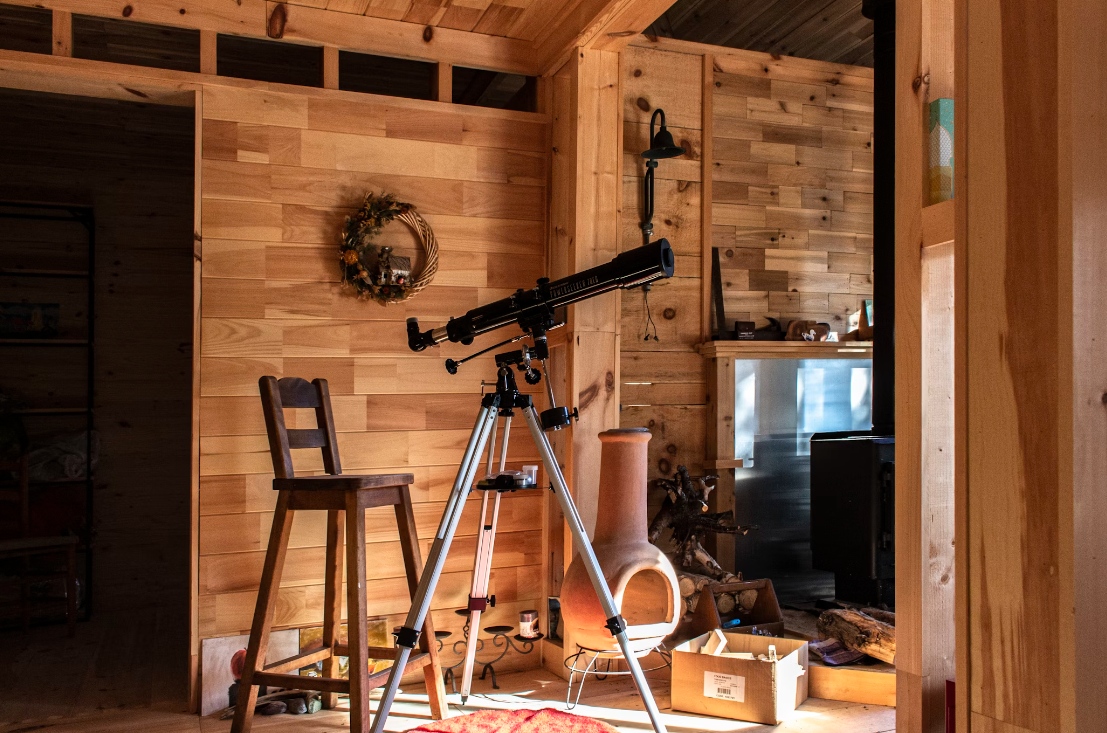
For many amateur astronomers, one of the biggest challenges is figuring out how to safely transport their telescope equipment when traveling by plane.
But fear not, stargazers! You can bring your telescope on a plane.
In this post, I’ll go over everything you need to know about flying with your telescope.
Also Read: can you use a telescope through a window
If you own a compact refractor telescope, such as an ED doublet or apochromatic design, you can take them as carry-on luggage.

These telescopes usually have apertures ranging from 60mm to 102mm and are lightweight, so you can easily pack them in a backpack or small carry-on bag.
When you’re packing it, take it apart and pack the pieces securely.
Take off the diagonal mirror, eyepieces, and maybe the dew shield or other extras.
You can then pack the optical tube, mount, and any necessary accessories into a backpack or small roller bag that fits within the airline’s size limits.
Some Maksutov-Cassegrain telescopes can also work well as carry-on luggage.
Despite their larger apertures (typically ranging from 90mm to 127mm), many Maksutov-Cassegrain telescopes are designed with travel in mind.
Telescopes like the Meade ETX90 or Celestron NexStar 4SE can be taken apart easily and packed into a backpack or carry-on case, with the optical tube and base fitting together neatly.
Also Read: can you leave a telescope outside
However, some larger Maksutov-Cassegrain models might be too big or heavy for carry-on luggage, depending on the airline’s rules.
If that’s the case, you might have to check the telescope as luggage or consider other options.
What if you have a bigger telescope setup, like ones with Schmidt-Cassegrain or Newtonian reflector optical tube assemblies (OTAs)?
You can pack the OTA and mount it separately in your checked luggage.
This helps spread out the weight and size of your gear, which makes it easier to handle when you’re flying.
A tough hard-sided case, such as those made by Pelican or SKB, is a good choice for packing a telescope OTA and single-arm fork mount.
These cases are built to give great protection against bumps, moisture, and other stuff.
BTW, check out our 125mm F10 Schmidt-Cassegrain
Plus, they usually come with foam inserts that you can customize to fit your telescope and mount components perfectly.
Another option is to get a train-wave or harmonic drive system.
These advanced mounts from companies like iOptron, Pegasus Astro, or ZWO are designed to be super compact and lightweight.
And they can still handle heavy telescopes.
Plus, these can fit completely inside a standard checked suitcase or even be carried onto the plane as cabin baggage (depending on the specific model and airline rules).
For instance, the iOptron AZ Mount Pro can support telescopes weighing up to 30 lbs and only weighs 8 lbs itself, making it a great choice for airline travel.
Another important thing to think about is how you’re going to power the mount or any other electronic devices.
Airlines often have rules about the kinds of batteries you can bring, especially for lithium-ion batteries commonly used in telescope mounts.

The TSA says that passengers are usually allowed to bring on board up to two spare lithium-ion batteries that are rated between 101 and 160 watt-hours each.
But you need approval from the airline for this.
So, you MUST contact your airline beforehand to make sure you can bring these larger lithium-ion batteries with you.
If your telescope mount can’t be powered by regular alkaline batteries, you’ll have to figure out the best way to transport and power your equipment.
Apart from what we talked about so far, there are a couple of other things you need to consider:
It’s really important to pack your telescope gear securely when you’re flying.
Make sure you use cases that fit your equipment well or add plenty of padding to keep everything safe while it’s being handled and moved around.
Also, be ready to take your telescope out of its case for security checks at the airport.
If you’re bringing your telescope as a carry-on, try to board the plane early so you can find space in the overhead bins right above your seat.
That way, you can keep an eye on your valuable gear throughout the flight.
Always check the latest weight and size restrictions for both carry-on and checked luggage with your airline.
Telescopes and mounts can be heavy and bulky, so you may need to pay additional fees for overweight or oversized items.
Considering the value of telescope equipment, it’s a good idea to look into travel insurance policies that can provide coverage in case of loss, theft, or damage during your trip.




Leave a comment